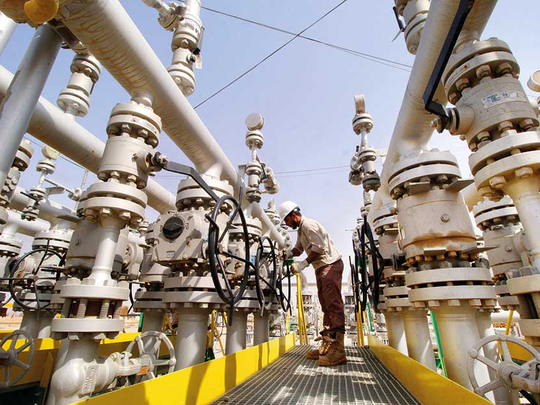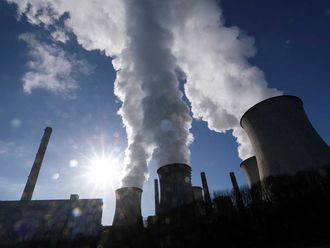
Hong Kong: Oil investors are back to being sceptical over whether Opec’s output curbs are shrinking a market glut fast enough, keeping prices below $49 a barrel.
Futures are headed for their second weekly drop following 2017’s biggest rally late last month. Neither a pledge by the top two members of the Organisation of Petroleum Exporting Countries to strengthen their commitment to cuts nor declining US crude inventories is managing to lift prices. That’s as America pumps more while the inventory drop is seen as seasonal. Opec’s own output is increasing on more supplies from Libya, which is exempt from the group’s deal to reduce production.
While US crude inventories slid to the lowest level since October, gasoline stockpiles last week rose for the first time since early June, indicating that consumption boosted by the summer driving season may be waning. Saudi Arabia’s Energy Minister and his Iraqi counterpart met in Jeddah and agreed to ensure coordination of their policies. Opec raised demand estimates for its crude through 2018, but higher Libyan output is undermining its plan to shrink a global glut.
“The power of Opec rhetoric is diminishing,” said Michael McCarthy, a chief strategist at CMC Markets in Sydney. “The underlying demand picture has slightly improved, but it’s a glacial improvement for the oil market.”
West Texas Intermediate for September delivery was at $48.32 a barrel on the New York Mercantile Exchange, down 27 cents, at 12:02pm in Hong Kong. Total volume traded was about 55 per cent above the 100-day average. The contract lost 97 cents to $48.59 on Thursday. Prices are down 2.5 per cent this week.
Brent for October settlement fell 25 cents to $51.65 a barrel on the London-based ICE Futures Europe exchange. Prices on Thursday dropped 80 cents, or 1.5 per cent, to $51.90. The global benchmark crude is down 1.5 per cent this week and traded at a premium of $3.17 to October WTI.
Opec increased its forecasts for the amount of crude it needs to supply in 2017 and 2018 by about 200,000 barrels a day for each year, according to a monthly report Thursday from its secretariat in Vienna. Libya boosted output by 154,300 barrels a day, while production from all 14 members reached 32.87 million a day.











